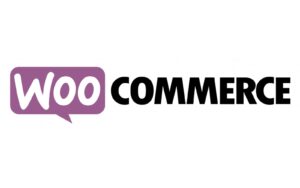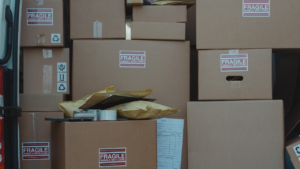WooCommerce is one of the most cost-effective and easy-to-customize shopping site software suites online. It’s great because your vision of a beautiful online store can be realized exactly the way you want it to be, as WooCommerce is very customizable when compared to other software like Shopify.
On top of that, the fees are low too!
Yet, no matter what software you use to run your online store, one thing remains constant: you have to ship what you sell. Early on, you may ship your own orders, checking email notifications when they come in and printing postage at home so your orders can go where they need to.
But that’s not a scalable solution, as every minute you spend shipping your own orders is a minute you don’t spend growing your business.
If you’ve decided it’s time to hire some help with WooCommerce order fulfillment, then you’ve come to the right place. Here are some tips to help you ship orders quickly, cheaply, and intact.
1. Decide how many warehouses you need.
Once you start shipping over 100 orders per month, it makes sense to outsource to a fulfillment center. You are likely to break even on cost and save a bunch of time.
But before you do that, you need to decide whether you need just one warehouse or multiple.
For smaller operations or operations where most of your customers are in one country or region, you can feel confident about your choice to use just one warehouse. That way, you don’t have to manage inventory levels at different locations.
You just send it to one company, and let them do the rest!
However, if you have a big company shipping several thousand orders per month or if you have customers spread out all over the world, it might make sense to find multiple warehouses. You can do this in one of two ways: either hire a company with multiple locations (such as ShipBob) or manage multiple warehouses within an inventory management software system (such as Skubana or ChannelApe).
2. Pick one or more warehouses to ship your WooCommerce orders.
When it’s time to choose warehouses to work with, here are some factors to consider:
- Size and weight of your items
- Number of orders shipped per month
- Number of unique SKUs
- The location of your customers
- Reputation, online reviews, and testimonials
You want to make sure you choose a warehouse that ships items like yours in terms of size and weight. You also want to make sure that the fulfillment center has adequate capacity to ship your order volume per month.
Some order fulfillment centers cannot handle high volume, and others cannot cost-effectively ship low volumes.
If you have dozens or hundreds of unique SKUs – a situation which may happen if you sell an item that comes in many varieties (e.g. apparel) – ask potential fulfillment partners if they can handle a lot of SKUs. Order fulfillment for companies with high SKU counts is a specialized service.
Additionally, you’ll want to make sure that any fulfillment partner you choose is reasonably close to your customers. For example, you don’t want a fulfillment center in Australia to ship to Americans – the postage cost would be too high and it would take too long to ship.
Lastly, make sure you do your due diligence in terms of reviews. When fulfillment goes wrong, it tends to go really wrong – lost orders, lots of money spent, and so on.
Look for the presence of positive reviews and the absence of red flags.
3. Integrate your WooCommerce store and warehouse/inventory management system.
If you’re going with just one warehouse, make sure their system integrates with your WooCommerce store. That way, you won’t have to manually send orders over – they will automatically be transferred to the warehouse.
In short, you won’t have to do anything.
If you’re going to work with multiple warehouses, it’s a little more complex. For a big company with multiple locations, make sure your store integrates with their system.
If you are using an inventory management system to manage multiple warehouses with different companies, make sure WooCommerce and your inventory management system integrate.
Fortunately, most major fulfillment providers and inventory management systems these days integrate directly with WooCommerce, leaving you with a lot of good options.
4. Decide on basic inventory best practices.
For each warehouse your company uses, it’s important to establish some basic rules for inventory management. In particular, there are two things that are really important to focus on if you want to avoid stockouts and the lost revenue that comes along with them.
First, consider how much buffer inventory you want in stock at each warehouse. Basically, you want to make sure you always have enough stock on hand to where you will never run out when ordering more.
Second, based on how much buffer inventory you have, establish a reorder point. That is, when your inventory falls below a certain level for a warehouse, this is the point at which you will reorder more stock.
5. Keep postage rates in check.
By far, the largest order fulfillment expense you are likely to encounter will be for postage. In order to keep postage rates low, you have three main options:
- Select a fulfillment warehouse with low postage rates for common scenarios.
- Strategically locate inventory near customers to keep postage rates low.
- Use a system like EasyShip to help you find the lowest postage rates.
Taking any of these steps can save you tons of money in the long run.
6. Send inventory to the warehouse(s).
Once you have selected one or more fulfillment partners, settled on some basic inventory policies, and found a way to keep shipping costs in check, it’s time to send your inventory to the warehouse.
There are two basic ways you can do this.
- You can send items via USPS, UPS, or FedEx to the warehouse – this is appropriate for a small amount of items.
- You need to book freight to coordinate the shipping of pallets or containers of items from one place to another.
For the second, you will either need to hire a freight broker or use a freight marketplace such as Freightos. Here’s a guide on how you can do that.
7. Determine the correct package size for your items.
In order to keep fulfillment costs in check, you need to consider the size of the packaging you are using. The height, width, depth, and weight of a package all affect how much it costs to ship your items.
Therefore, whenever possible, you should ship in the smallest possible box and use the most lightweight possible materials for padding, such as bubble wrap.
Using oversized boxes to ship items is an easy way to rack up excessive postage fees. When it comes to WooCommerce orders, remember: pack tight, and pack light.
8. Choose the best packaging materials for your items.
In addition to choosing the correct sized packaging, it is important to make sure that the right packaging materials are used as well. If the item breaks, you will have to ship a replacement, so you want to prevent this from happening.
If an item is breakable or can otherwise be damaged in the mail easily, it needs to be shipped in a rigid box. When shipping items like glassware, copious amounts of void-filling material such as bubble wrap and air cushions need to be used.
It is true that boxes weigh more than polybags, and lots of cushioning weighs more than a little, but when there is a risk of items breaking in transit, the cost/benefit calculation will almost always skew in favor of more careful packaging.
9. Consider parcel insurance.
When shipping fragile or high-value items, it is also a good idea to pay for parcel insurance. The idea is simple – no matter what precautions you take, some percentage of your items will be lost in the mail and you will need to send a replacement.
For a $30 board game, this is not a big deal. For a $1,500 watch, it is absolutely a big deal.
Using parcel insurance will allow you to mitigate the financial risk of losing inventory in the mail. Companies like Shipsurance are known to provide particularly good rates, since they are a third-party.
However, most postal carriers will also offer parcel insurance, albeit at a higher price.
10. Always keep spare inventory on hand for replacements.
Parcel insurance can protect you from financial losses that come from losing items in the mail, but it cannot protect you from the fact that you have to send a replacement out. When calculating your reorder point and buffer stock, be sure to account for the possibility that 3-5% of your WooCommerce orders will need to be replaced for one reason or another.
11. Notify your customers when items are shipping and give them tracking information.
As many as 97% of customers expect to be able to track items after ordering. Faced with such a staggering statistic, you must be sure to communicate with customers after they order. At a minimum, send confirmation emails with tracking numbers.
It may also be a good idea to notify customers when their item ships as well as when it has arrived.
Trust is a big deal – especially when ordering on a WooCommerce or Shopify store instead of a megastore like Amazon. This is an easy way to establish trust and possibly gain some more sales in the long run.
12. Offer fast shipping for free.
Two-thirds of customers expect free shipping. When you provide free shipping, especially free two-day shipping, you can reduce cart abandonment rates, increase sales, and provide a good customer experience. With a good fulfillment network and inventory management practices, providing free two-day shipping is very achievable for most of your customers.
If you can’t quite manage two-day shipping, that’s okay. Studies have shown that 91% of consumers expect to receive online orders within a week, but only 9% expect it within a day.
The moral of the story is that for smaller businesses, free shipping is more important than 2-day or 3-day shipping.
13. Offer even faster expedited shipping options.
Sometimes, customers like getting items really quickly – think next-day shipping. By providing customers with expedited shipping options, even at an extra cost, you can further reduce cart abandonment rates, increase sales, and provide a good experience. Being able to accommodate impatience is profitable!
14. Make the returns process easy.
Setting up returns in WooCommerce is a multi-step process, but not a complicated one. You may ultimately want to use a plugin such as WooCommerce Smart Refunder or WooCommerce Returns and Warranty Requests to do the job.
The important thing here is that you want returns to be easy. That means making it automatic, giving customers options for cash or store credit, and allowing customers to print their own return labels.
That way, a customer never has to contact you to manually process a return, making life a little better for both you and the customer.
Final Thoughts
WooCommerce is a very feature rich eCommerce software and it plays nice with most order fulfillment companies. That means you truly can automate the operations of your store so you can focus on growing your business.
By following the tips in this guide, you can set up an elegant order fulfillment system to manage your orders, make customers happy, and keep costs in check!
Overwhelmed by all the work that goes into setting up an eCommerce store? Check out our free eCommerce/Shopify checklist.
It lists everything you need to know to get your store up and running.
Need help fulfilling your orders? Click here to request a quote from Fulfillrite.
 Brandon Rollins is Director of Marketing at Fulfillrite. His main areas of expertise are online marketing and supply chain management. He also runs Pangea Marketing Agency and writes for Weird Marketing Tales.
Brandon Rollins is Director of Marketing at Fulfillrite. His main areas of expertise are online marketing and supply chain management. He also runs Pangea Marketing Agency and writes for Weird Marketing Tales.











